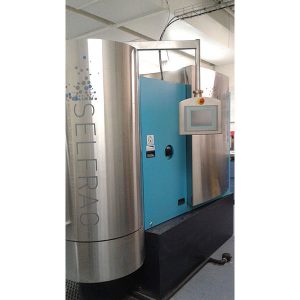Selective Fragmentation Proves Invaluable for Geochronology
In the world of geological analysis, sample preparation is critical. The ability to extract minerals of interest, like zircons, for geochronology studies is key to the success of a project. At Curtin University, Dr. Tanya Claridges sample preparation work using electrodynamic fragmentation underpins her colleagues ability to analyse samples further with highly complex and sophisticated analytical instruments.
Tanya works in the Department of Applied Geology at Curtin University which is located in close proximity to much of Australias mineral wealth in Western Australia. Here they carry out valuable research that helps exploratory mineralogists locate ore deposits of commercial value
Tanyas work currently focusses on sample preparation, more specifically selective fragmentation using a SelFrag Lab where she has been called upon to process a vast array of geological samples. The system has achieved excellent results in almost all cases using pulses of high voltage that are sent through materials, cleaving them apart along phase boundaries. The advantage of this technology is that individual grains effectively fall away from one another, while other techniques indiscriminately break down all particles.
Geochronology studies, which contribute to understanding the geological processes acting on anything from indivual rock units, to mountain belts, mineral systems and the history of entire continents, consume the bulk of her time. These studies require collection of small and scarce zircon crystals for dating purposes. The SelFrag has proven to be invaluable here with its ability to liberate, preserve and concentrate zircons. This in turn increases the yield of useful material, making them easier to locate and analyse.
On a more international scale, her work was crucial to the analysis of meteorite impact remains from Scotland1. The SelFrag was able to effectively liberate zircons from attached minerals while keeping surface features of grains intact. This is important because the zircons have what she describes as having gnarled, lumpy, fractured aspects to them. These surface features hold a lot of important data and these features are all but destroyed using conventional crushing and grinding. The SelFrag was able to preserve the shocked crystals such that yield of useful crystals was much greater, allowing my colleagues to identify the oldest known occurrence of this mineral at the Stac Fada impact site. This is important because it breaks ground for future applications in using the presence of reidite as a proxy to locate even older impact events. In fact this project would not have been possible without the SelFrag, she added.
When asked what she liked about the technology she replied, Ive been using the SelFrag for over two years now and the novelty of electrocuting rocks still hasnt worn off. It is also much more convenient compared to traditional techniques as it is quick, simple to use, doesnt require much cleaning and doesnt introduce contaminants which is very important. Also, it doesnt generate dust making it safer from a health perspective.
In terms of the future for SelFrag technology, Tanya saw two areas where she thought the technology could be applied. Industrial processors are always looking for ways to reduce energy consumption of which crushing and grinding is the largest consumer. Liberation using SelFrag electrodynamic fragmentation technology has great potential here. For academia, the dating of young rocks is an application where the technology could be used with great effect due to its ability to preserve fragile crystals, she said.
SelFrag is distributed in Australia and New Zealand by AXT. For more information on SelFrag selective fragmentation technology or other analytical equipment for geological applications, please visit www.axt.net.au.
Posted August 11, 2016
- Precambrian reidite discovered in shocked zircon from Stac Fada Impactite, Scotland, S.M. Reddy et al., Geology 43 (10): 899-902
The SelFrag Lab, high voltage pulsed power fragmenter at Curtin University.


